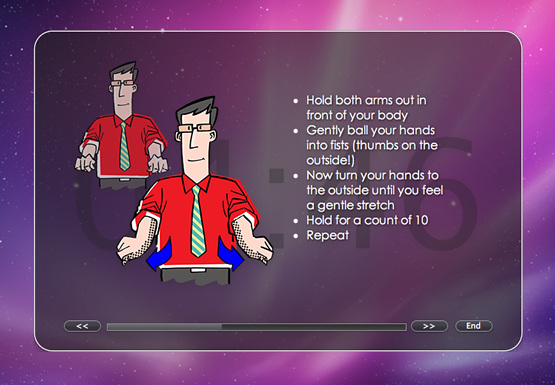Kauai Physical Therapy Blog
Home of Action Physical Therapy: Kauai's Premier Physical Therapy and Personal Fitness Clinic
Hand & Wrist
A New Therapy Instrument is Revolutionizing Stroke Rehab
Power Chord
At Action Physical Therapy, we all have our own opinions about who is making the best music these days. With flood of new artists pouring onto the scene, it’s hard to keep up. But something that we all agree on, is how powerful music can be in the recovery process. For decades, music therapy has been employed in rehabilitation programs and lauded for its positive impact.
Historically, music therapy has been in the form songs played or performed for the patient. But a recent advancement is changing the tune of music therapy, by putting it directly in the patient’s hands.
Flint Rehabilitation Devices has introduced a revolutionary tool in stroke rehabilitation with their MusicGlove, a computing device worn over the hand to help improve fine motor skills that have been compromised due to a stroke.
Combined with a specially fitted mobile tablet device, MusicGlove users play a Guitar-hero style game that can help them restore movement in their fingers and hands. In stroke therapy, massive repetition of movement to the affected parts of the body is proven to help the brain re-route neuronal circuits. This allows the patient to regain at least some (and sometimes all) of their motor function.
The problem with repetition is that it’s, well, repetitive and gets boring for the patient. Imagine repeating the same hand motion 1,000 times, every day for weeks or months at a time. When the patient’s therapy sessions have ended, and they are left to perform these exercises at home, compliance falls drastically. The MusicGlove is designed to make these repetitive (yet crucial) hand exercises fun and engaging.
The proof is in MusicGlove’s research, which has shown greater improvement in regaining motion when compared to conventional rehab exercises. And, patients stay more compliant with their at-home therapy.
Perhaps the best part of MusicGlove is its access. It has a relatively cheap price tag (at least when compared to other rehab medical devices), is completely portable, very easy to set up and use, and doesn’t require a doctor’s prescription. In fact, it’s even available on Amazon.
The MusicGlove’s versatility goes well beyond stroke therapy. Patients with brain, spinal cord, muscular, and other forms of neurological injury can also benefit from this exciting new technology. And that is music to our ears.
Carpal Tunnel Syndrome Basics
Now that most of us spend at least a small part of the day on a computer if not the entire work day, understanding Carpal Tunnel Syndrome becomes more important. With simple prevention techniques along with good nutrition and regular exercise you can protect yourself from the dangers of Carpal Tunnel.
Practice good ergonomics.
It is your right and personal responsibility to set up your work station with proper ergonomics. There are several simple steps to make sure you are not putting undue stress on your eyes, neck, back and wrists.
Position yourself properly at your computer. Your screen should be 18″ to 24″ away from you and the top of your document should be at eye level.
Set up your keyboard so that it is flat or slightly elevated. Do not have your keyboard slanted downward.
Keep your wrists straight and elbows in a 90 degree angle while typing.
Rest your wrists when you are not typing.
Take frequent short breaks rather than one long break.
Stretch your wrists before work, during breaks, and after work.

A personal assistant pops up on screen to stop over-use, teach good ergonomics, and keep track of scheduled breaks.
For advanced assistance, you can use ergonomic software such as MacBreakz for Apple, a sophisticated personal ergonomic assistant designed to promote healthy and productive computer use.


